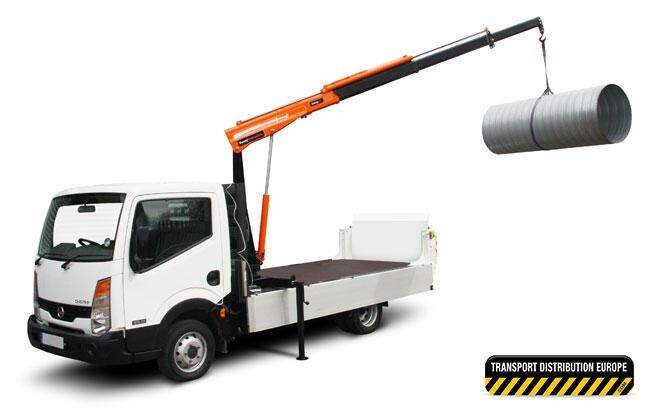Loads Better For Sustainability
Mar 27, 2013
Fleet operators are increasingly looking to improve the sustainability of their commercial vehicles. A small but important contribution to this objective can be made when choosing equipment such as the cranes and platform lifts that many operators now specify to eliminate manual handling and lifting. The safety and productivity of operatives often forms part of an organisation's sustainability considerations but many are also seeking additional benefits. Once the decision to install equipment on the vehicle is made, the aim should be to minimise weight, maximise carrying capacity and reduce the number of journeys because these help to promote sustainability through increased efficiency with reduced fuel, maintenance and labour costs.

The first consideration is to match the application to the equipment. All too often, operators install cranes or platform lifts which are far too big for their requirements in the misguided belief that the extra capacity might be useful. Larger models tend to cost more, weigh more and take up more room which is wasteful and uneconomic. With its range of compact cranes with maximum working loads of 100 to 2000kg and platform lifts with maximum working loads up to 500kg, Penny Hydraulics offers its customers complete choice to specify the model best suited to their specific handling requirement. The company is able to recommend or demonstrate on site the best option for any given application. Each model in its range is designed and manufactured for simple installation and operation while being robust and reliable.
On any commercial vehicle the crane or platform lift should be compact to ensure it does not take up too much of the available load space. More room will be available for carrying loads which means fewer journeys will be needed, saving time and money. The weight of the equipment is also important. Many fleet operators are downsizing from 7.5 tonne vehicles to achieve better fuel economy but still want to install effective load handling equipment. At the same time, however, vehicles are routinely supplied with a wider range of accessories such as air-conditioning, airbags and electronic equipment which adds to the overall weight and so decreases the payload. Saving a few kilograms on load handling equipment will help to improve carrying capacity or increase fuel economy.

Over the past couple of years Penny Hydraulics has re-engineered its entire range of cranes and platform lifts using its advanced in-house CAD and finite element analysis facilities. Individual components have been redesigned for higher grade materials and to remove unnecessary metal or replaced with lightweight alternatives incorporating alloys or plastics. The resulting models are significantly lighter but still deliver the same levels of performance and reliability.
Another less tangible aspect of sustainability is that choosing the right equipment and providing suitable training makes work simpler and safer. Installing load handling equipment on a vehicle often means one person can do the work that previously required two. The absence of manual handling or lifting reduces the risk of industrial injury while staff generally suffer less fatigue which means they remain alert and efficient throughout the working day. All of this adds up to a significant improvement in productivity.
